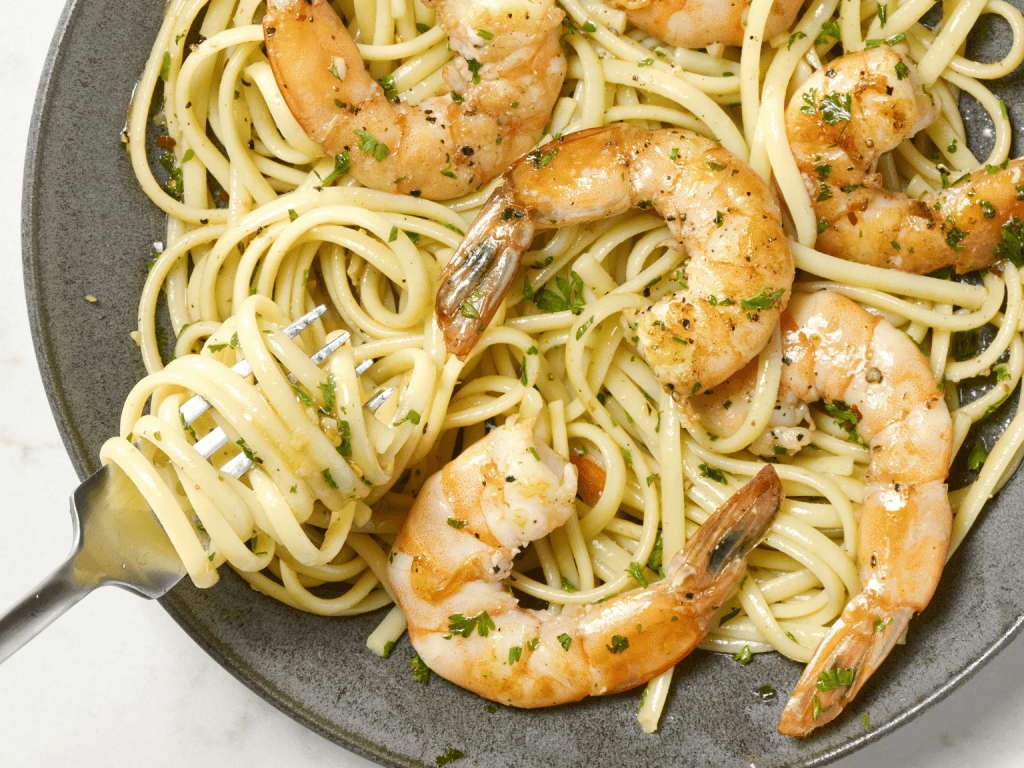If you’ve ever dug into a delicious shrimp pasta at a restaurant or whipped up a homemade version, you’ve probably noticed a recurring detail: the shrimp often come with their tails still attached. It might seem odd, even a bit inconvenient, but there are solid culinary reasons why chefs around the world keep shrimp tails intact. From enhancing the flavor and texture to providing a more visually appealing dish, the practice serves multiple purposes that ultimately elevate the dining experience. Let’s dive into the delicious details and uncover why shrimp tails are here to stay.
Flavor Enhancement: The Power of the Shell and Tail

One of the primary reasons for leaving shrimp tails on is flavor enhancement. Much like cooking meat on the bone, leaving the tail (and sometimes the shell) intact helps retain the shrimp’s natural juices, infusing each bite with a richer, more intense taste. The shell holds flavorful juices that seep into the shrimp and surrounding sauce, creating a depth of flavor you might miss with peeled shrimp.
The tail contains amino acids and fats that contribute to the dish’s savoriness, adding a subtle umami that melds beautifully with creamy or tomato-based sauces. Cooking shrimp with tails and shells intact captures these flavors within the pasta sauce, making each bite more satisfying and layered.
Aesthetic Appeal: Adding Visual Flair to Your Dish
In the world of culinary arts, presentation is almost as important as taste. Shrimp tails add a refined look to pasta dishes, giving them a touch of elegance and making them visually captivating. When shrimp tails are left on, they form a pleasing curve, adding height and structure that can transform a simple bowl of pasta into a dish that feels sophisticated and restaurant-worthy.
The tail serves as a natural “handle” of sorts, making the shrimp look distinct and beautifully arranged along the pasta. For chefs, the presentation isn’t just about pleasing the eye; it’s about creating an experience that feels special from the moment the dish arrives at the table. This subtle design choice speaks to the idea that food should not only taste good but also look inviting.
Convenient Handling: Perfect for a Hands-On Approach
Another practical reason for leaving shrimp tails on is that they act as a convenient handle for diners. While using a fork and knife with shrimp pasta is standard in fine dining, the tail allows for a quick, hands-on approach, especially in casual dining settings. The tail provides a small, sturdy part of the shrimp that can be grasped without much mess, making it easier for diners to enjoy shrimp as finger food if they wish.
This functionality is especially useful for dishes served in a communal style, such as shared seafood platters or tapas, where diners may feel more comfortable eating with their hands. For those who prefer a more interactive, casual dining experience, the tail becomes a natural way to handle the shrimp without needing extra utensils.
Texture Contrast: A Crunchy Counterpart to Tender Shrimp
Texture is another dimension of food that chefs pay close attention to, and shrimp tails offer a surprising contrast to the soft, juicy flesh of the shrimp. While not everyone enjoys this crunch, many people find the contrast between the tender shrimp and the slight crispiness of the tail to be a delightful combination. This subtle variation in texture adds complexity to the dish, making it a more dynamic experience for the palate.

Though this crunch isn’t for everyone, some diners appreciate the variety it brings, likening it to the experience of enjoying crunchy breadcrumbs on a soft pasta. For these diners, the tail isn’t just a decorative flourish; it’s an added layer of enjoyment that enhances the overall sensory experience.
Cultural Tradition: Honoring Culinary Heritage
Shrimp is enjoyed in many forms across different culinary cultures, and in many of them, keeping the tail on is a matter of tradition. In several Asian and European cuisines, shrimp are typically cooked and served whole, celebrating the integrity of the ingredient. Chefs who draw inspiration from these traditions often carry this practice into their pasta dishes, treating the shrimp with the same respect as they would in their native cuisine.
Serving shrimp with tails intact pays homage to the idea of honoring ingredients as a whole, showcasing their natural form and beauty. This practice isn’t only about aesthetics; it reflects a deeper respect for the ingredient and its place within the culinary world. So, when chefs leave the tails on shrimp, they’re sometimes nodding to these age-old culinary traditions.
Practicality in Cooking: Saving Time and Preserving Shape
From a practical standpoint, leaving the tails on shrimp can save time for chefs, especially in high-paced restaurant kitchens. Removing the tail from every shrimp can be a meticulous task, especially when cooking for large numbers. By keeping the tails intact, chefs can speed up prep time without compromising on quality.

Additionally, cooking shrimp with their tails helps them hold their shape better. Without the tail, shrimp are more likely to curl up too tightly, which can make them appear smaller and less appetizing. The tail acts as a natural anchor, keeping the shrimp slightly extended and giving the final dish a more appealing, substantial look.
Conclusion: Tails On or Off? It’s All About the Experience
In the end, whether the shrimp tail stays on or is removed comes down to a blend of flavor, presentation, tradition, and practicality. Leaving the tail on shrimp is more than a matter of convenience; it enhances the taste, adds visual appeal, and offers a textural contrast that can make a dish memorable. Chefs choose this approach thoughtfully, balancing aesthetics and taste to elevate each dish they create.
So, next time you’re faced with shrimp tails in your pasta, take a moment to appreciate the careful choices that went into that presentation. You’re not just eating a meal; you’re enjoying a rich, layered experience that captures both tradition and culinary creativity. Whether you prefer to pick the tails off or enjoy them as they are, knowing the reasons behind this choice can deepen your appreciation for the artistry of food.


